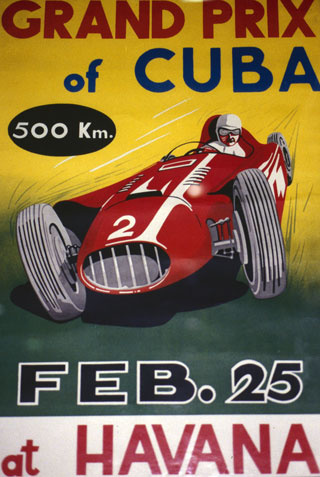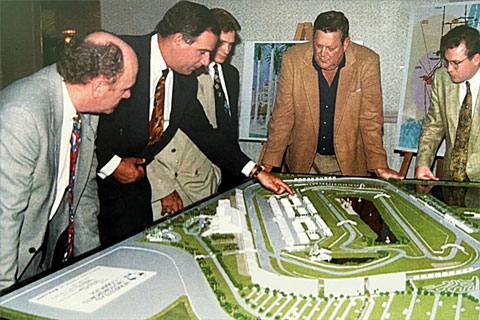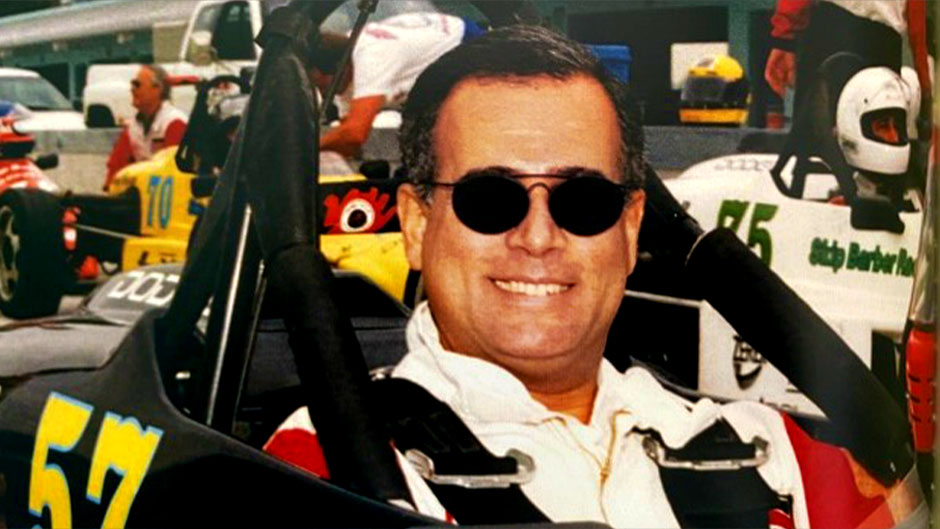The flags will wave and the engines will roar in 2022 when Formula One drivers race their rockets around the new 3.36-mile track at Hard Rock Stadium. Race day will undoubtedly conjure memories for Patricia Sanchez Abril of her father, Ralph Sanchez—the driving force behind a decade of Grand Prix held in downtown Miami and who later founded the Homestead-Miami Speedway, providing a home for IndyCar races and sports car events in South Florida.
“My father was an entrepreneur at heart, and he was extremely charismatic and convincing—that was the key to his success,” Abril said of her father who died in April 2013 at 64.
Abril—a faculty member of the University of Miami Patti and Allan Herbert Business School since 2004—is confident that her dad would be tremendously gratified to know that the Grand Prix was returning to the city that welcomed him on an Operation Pedro Pan flight in 1961 and where his dreams prospered.
Yet, talk about hairpin turns and a bumpy ride.
“Car racing was always the only business of the family—we all shared in it,” Abril said. Her grandparents worked in the mail room, her uncle put up the signs, and as a child she put up posters and later, after college, worked with marketing at the speedway.
“For me it wasn’t so much that I was a fan of racing, but more the reality that this was our family business,” she said.
It was a mom-and-pop business that was different from most.
“Everybody else’s father was a doctor or a lawyer or a banker, and ‘race car promoter’ wasn’t on the drop-down menu, so from time to time it would come up in family discussion: ‘And why are we doing this?’”

The reason was rooted in family lore: Sanchez, 8 years old and living outside Havana in 1957, got wind of the Cuban Grand Prix taking place in the Cuban capital that year and gobbled up the news and photos of the celebrities and drivers racing around the Malecón, the sea-hugging roadway.
“All the glamor and spectacle captured his imagination for the rest of his life,” Abril said.
A few years later in 1961, Sanchez, 12, arrived in Miami with other youths on an Operation Pedro Pan flight. He imagined his family would be close behind—though they were not able to join him until the late 60s.
The youths were not allowed to carry money, so his dad had packed a few expensive Cuban cigars in Sanchez’s knapsack for him to sell. The knapsack was stolen soon after he arrived and, for the next few years, his financial fortunes depended largely on the Catholic charity organization that hosted him.
While many of the other Cuban youths were relocated, Sanchez spent from 12-18 living in an Army barracks in Opa-Locka. Once on his own, he “worked a million odd jobs, including selling real estate,” and made a little bit of money, enough to feel comfortable, according to his daughter.
“In his early 30s he just had this idea, a vision that ‘why doesn’t Miami do the same thing that he saw in Havana’ when he was 8,” Abril recounted.
Sanchez began seeking out appointments to meet with the mayor or commissioners, sometimes waiting for hours to get in. Who was this guy with barely a cent to his name with the crazy idea of racing cars down Biscayne Boulevard?
“Today, we might think of it as a wealthy person’s side gig, but with my dad it was very much the opposite—he wanted to make this into a business,” Abril said.
He persisted and persisted—borrowing money, seeking sponsorships, and coordinating the political capital.
“My mother Lourdes was always such a trooper, marching right there next to him and grounding him when necessary,” Abril remembered. “He’s like ‘this is what we’re going to do’—and convincing people was a forte of his.”
Because a part of the downtown roadway involved federal jurisdiction, Sanchez had to arrange for that approval as well. Yet, he finally got the “thumbs up” for the race.
Abril, then in second grade, had been out with her grandparents driving around town and putting up posters about the race in restaurants and wherever they could.
“There was excitement in the family, but also a lot of fear—everything was riding financially on this one day,” Abril remembered.
On February 27, 1983, Abril was standing near the marina and the hairpin turn of the track when the race started. And soon after the rains started.
“It was a complete monsoon, and the race had to be stopped after 13 laps,” she recounted. “When it started raining, even at 8, I knew that it was going to mean dire financial circumstances in my house.”
Despite the tremendous debt, her father managed to make good on his promise and paid the purse. After first convincing the family, he was on the phone the following Monday morning with Budweiser, Eastern Airlines, and other sponsors, already planning for another race the next year.
His integrity paid dividends.
“There were a lot of fly-by-night people who wanted to promote events because it was sexy, but my dad showed everyone he was in it for the right reasons—and that earned him a lot of respect among the greats like Mario Andretti and Emerson Fittipaldi,” Abril said.
The race was held successfully the following year and every year after for nearly a decade in Miami’s downtown.

Toward the end of the 80s, realizing that the sport was in boom mode, that business was long term, and that the big sanctioning bodies—IndyCar, NASCAR, and Formula One—expected a home racetrack, Sanchez sought out partners to launch this new mission.
The devastation in 1992 of Hurricane Andrew opened a door of opportunity. While there were many detractors—you’re going from the downtown glamor of Miami to where?—the ever-persistent promoter became convinced that Homestead was the place.
But not just any place.
“My father was very aesthetically oriented,” Abril said. “He didn’t just want to build a stadium—he wanted to offer an experience.”
With its tiled bathrooms, tropical pastel colors, and scenic backdrop of palm trees and man-made lakes for boaters, the Homestead-Miami Speedway was unique as a racing car venue and construction helped support the revitalization of the area.
Abril was in college when the complex opened. She returned for a stint before going on to law school, and she helped in marketing and communications at the track. In the late 90s, her father sold his shares in the track to NASCAR.
Now, as Formula One prepares to return to Miami in the second quarter of 2022 (no date has been set yet), Abril recalled that this highest level of international auto racing was always on her father’s mind.
“This is a longtime talking and a longtime coming, that’s why it’s so exciting,” she said. “As early as right after the first race in the downtown, my father was always in talks with Formula One to try to bring them here.”
Family vacations during her childhood years were, in fact, travels to Grand Prix Formula One races—Canada, France, England, Portugal—always with the purpose of meeting with F1 leadership.
“That’s one of those fun facts for me when I’m asked to play ‘Two Truths and Lie’—I spent my family vacations at Formula One car races,” Abril laughed. “Oh, and also that I’m a business law professor,” she joked.
“Truly, my father would be so happy and so proud that Formula One is coming here,” she said. “He imagined this moment; he imagined this Miami as a sports and culture destination for the world,” she said.
“He was extraordinary—a charismatic, generous visionary with a very warm heart,” she remarked. “And his legacy continues.”

